Just last year a massive wildfire was ripping through my hometown in Lake County, a small rural county in the mountains above Napa Valley. The Valley Fire ended up being the third most destructive fire in California history, burning 76,067 acres and razing 1,955 structures to the ground. Four people were killed and four firefighters were seriously injured in the blaze.
A Year After the Valley Fire, Lake County Residents Rise From the Ashes
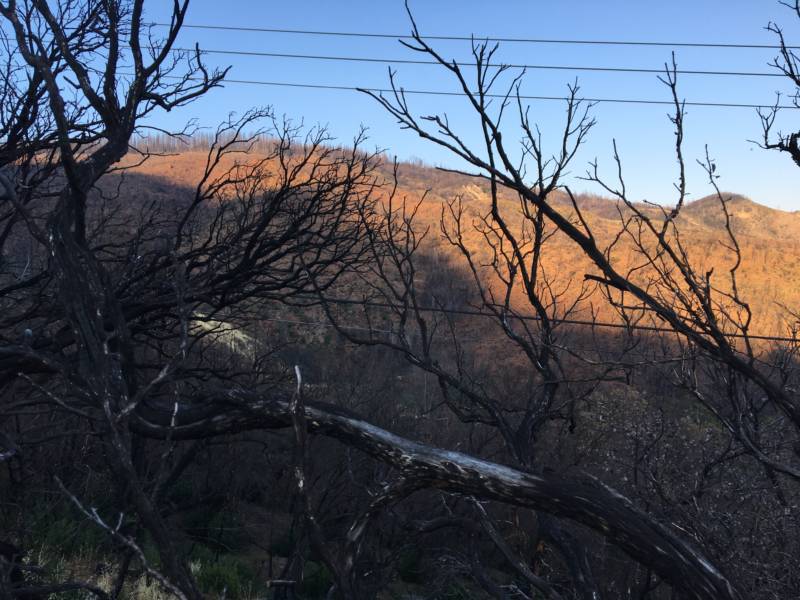
This year, I made the road trip back up to Cobb Mountain — a small township hit hard by the fire — to see how residents were recovering.
“Nothing’s gotten easier … sorry to say, but you cope with it,” local resident Dean Nicolaides said.
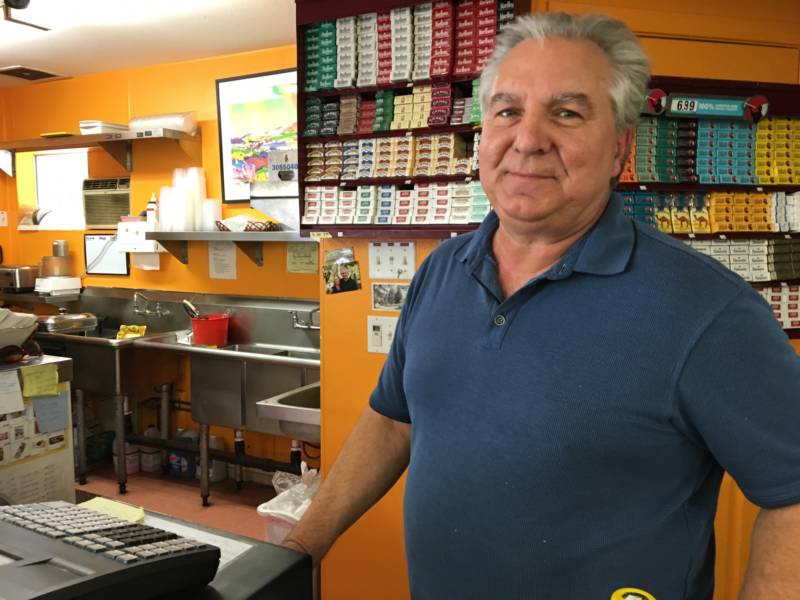
Cal Fire experts I spoke to said the Valley Fire was unprecedented. Drought, extreme temperatures, high winds and hillsides of densely packed fuel all made it uniquely devastating. But then just last month another fire hit the small town of Lower Lake a few miles away.
“It was as if a monster was reappearing, literally, and nobody knew what to do about it,” Nicolaides said. “Like is this the way life is now? There’s always a terror over your shoulder like something else is going to burn?”
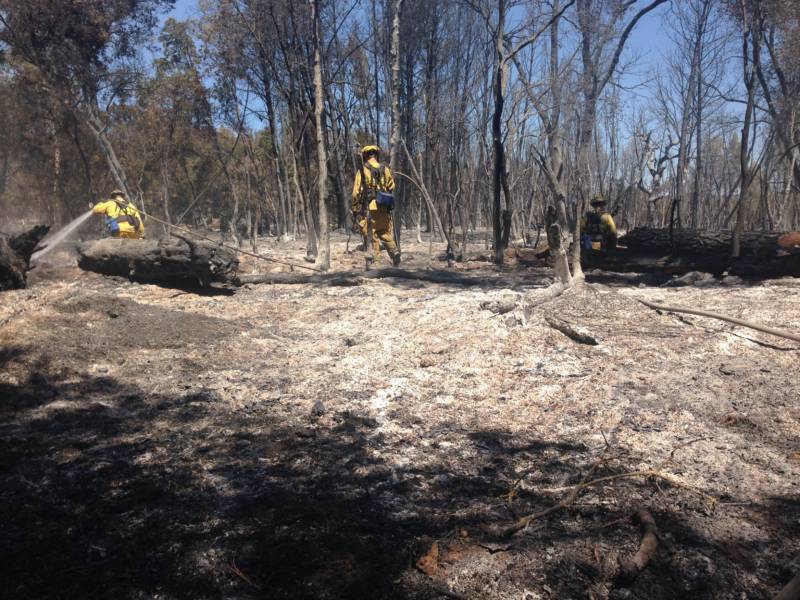
According to officials, an arsonist who’s now in custody set the Clayton Fire, which destroyed almost 200 homes. Residents were somewhat relieved by this, Nicolaides said, but the fear of fire is still pervasive.
“I know a lot of people that have suitcases by the door,” he said.
As I drove through Cobb Mountain’s neighborhood, I saw evidence of the Valley Fire and its aftermath everywhere. Trucks drove past me hauling out dead trees, and contractor advertisements dotted the roadside. And while I saw a few houses going up, many of the lots I passed remained empty.
Local resident Karl Parker says he and his wife, Linda Liang, are planning to rebuild, but they told me it’s a long process.
“We had to remove over 80 tall trees,” Parker explained. And removing those trees was just one of a million details they’ve had to deal with.
“You have to constantly deal and communicate with insurance,” Liang said. “And then there are the permits, and then there are the town meetings, and then there’s the water company, and the PG&E company, and the manufactured home, and replacement of this.”
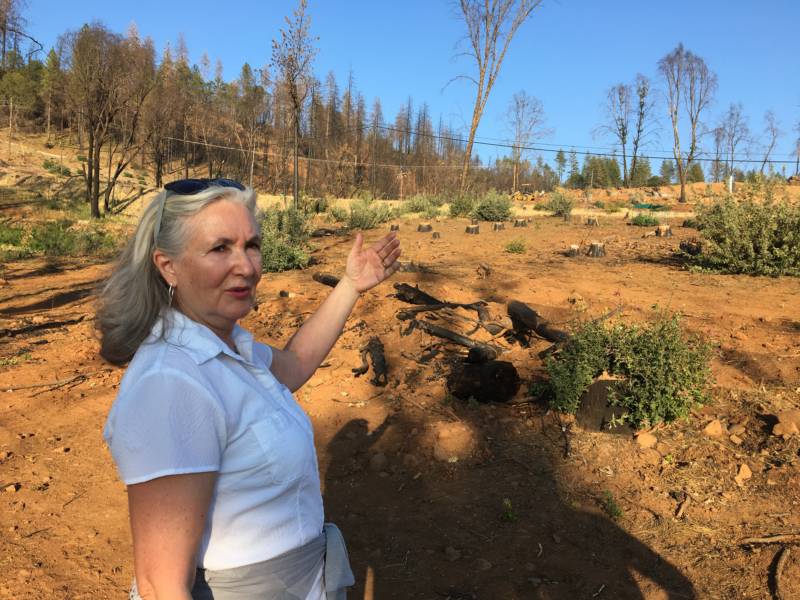
“It’s a lot of work to lose a house,” Parker said.
This work has stalled rebuilding efforts for many residents. County supervisor and Valley Fire recovery coordinator Rob Brown said only about 20 homes have been completed in the past year. That’s out of 1,281 homes that burned.
The cleanup so far has cost over $1 billion, according to Brown. And this is in a county of just over 60,000 residents that was already among the poorest in the state. Now the fire has gutted revenue from property taxes, and the recovery is far from over.
But where government agencies and even nonprofits have fallen short, another kind of safety net has sprung from the ashes.
I stopped in at what’s always been called the Little Red Schoolhouse, where I once performed in a talent show as a kid. Now out back are three shipping containers and a small community garden.
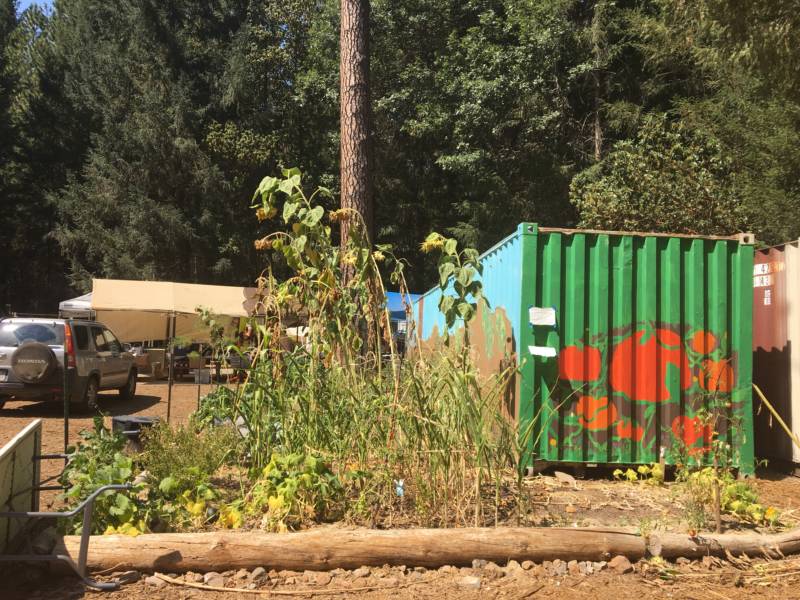
For the past year, retired schoolteacher Dave Geck, along with six other retirees, has been running this makeshift donation and distribution center.
“People didn’t say ‘go do it, you have to do it,’ ” Geck said. “You just have to feel it in your heart that it’s the thing to do.”
Geck and his team took Facebook requests from local residents and did their best to connect them with the things they needed, like tools, shoes, winter clothes and even housing.
“We had somebody who was living in a tent,” Geck said. “And I said, ‘Can we help this person?’ Somebody that weekend donated a trailer.”
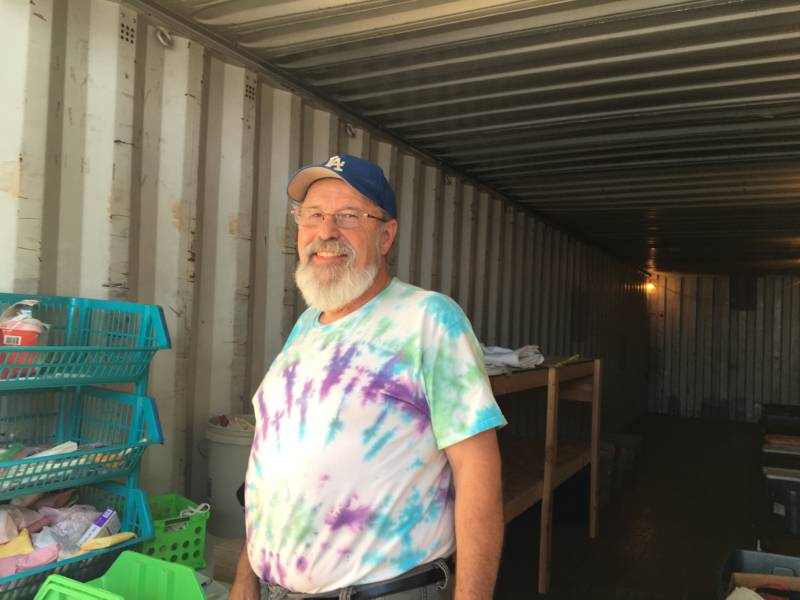
I started off my trip with a question: How’s my hometown recovering? And by the end I realized there are so many answers to that question. Four people died. Seven million trees were killed. It’s never going to be the same. But unlike last year, there is a sense of possibility. As my friend Dean Nicolaides said to me, “What was once forest will become a meadow.”





